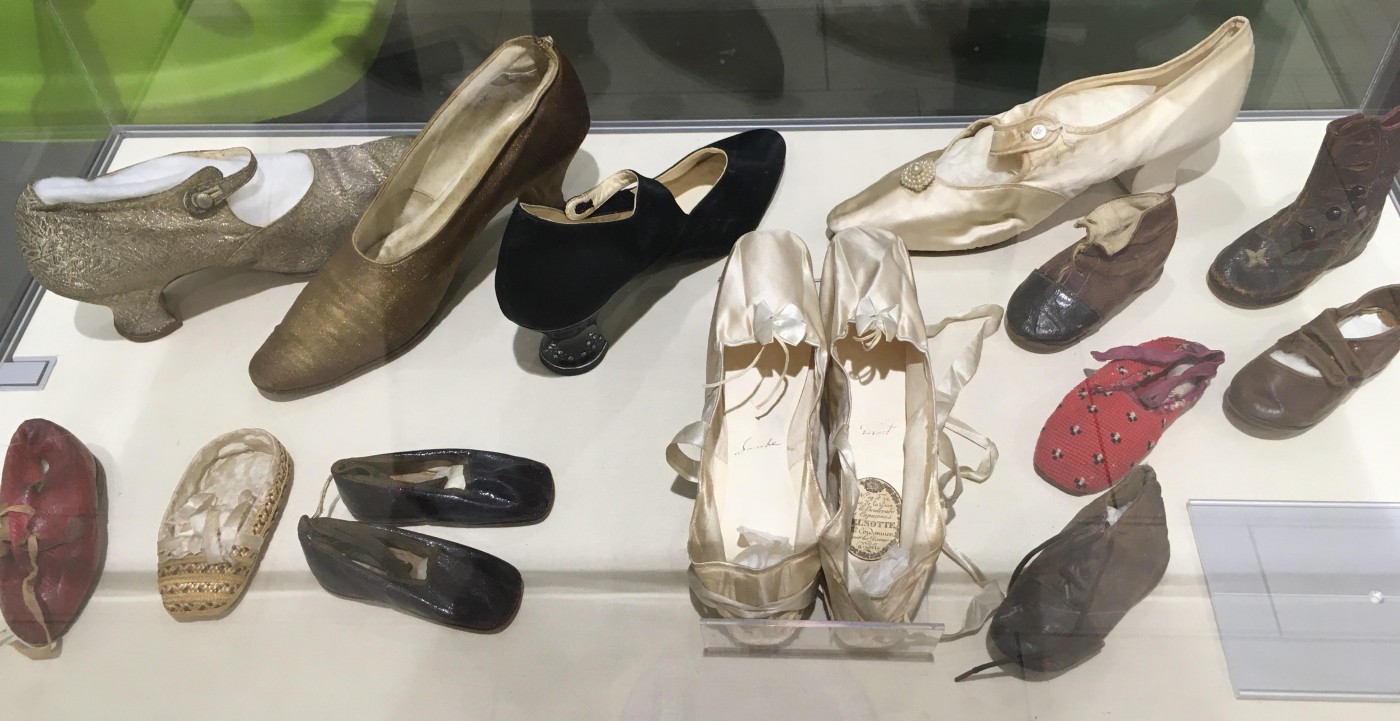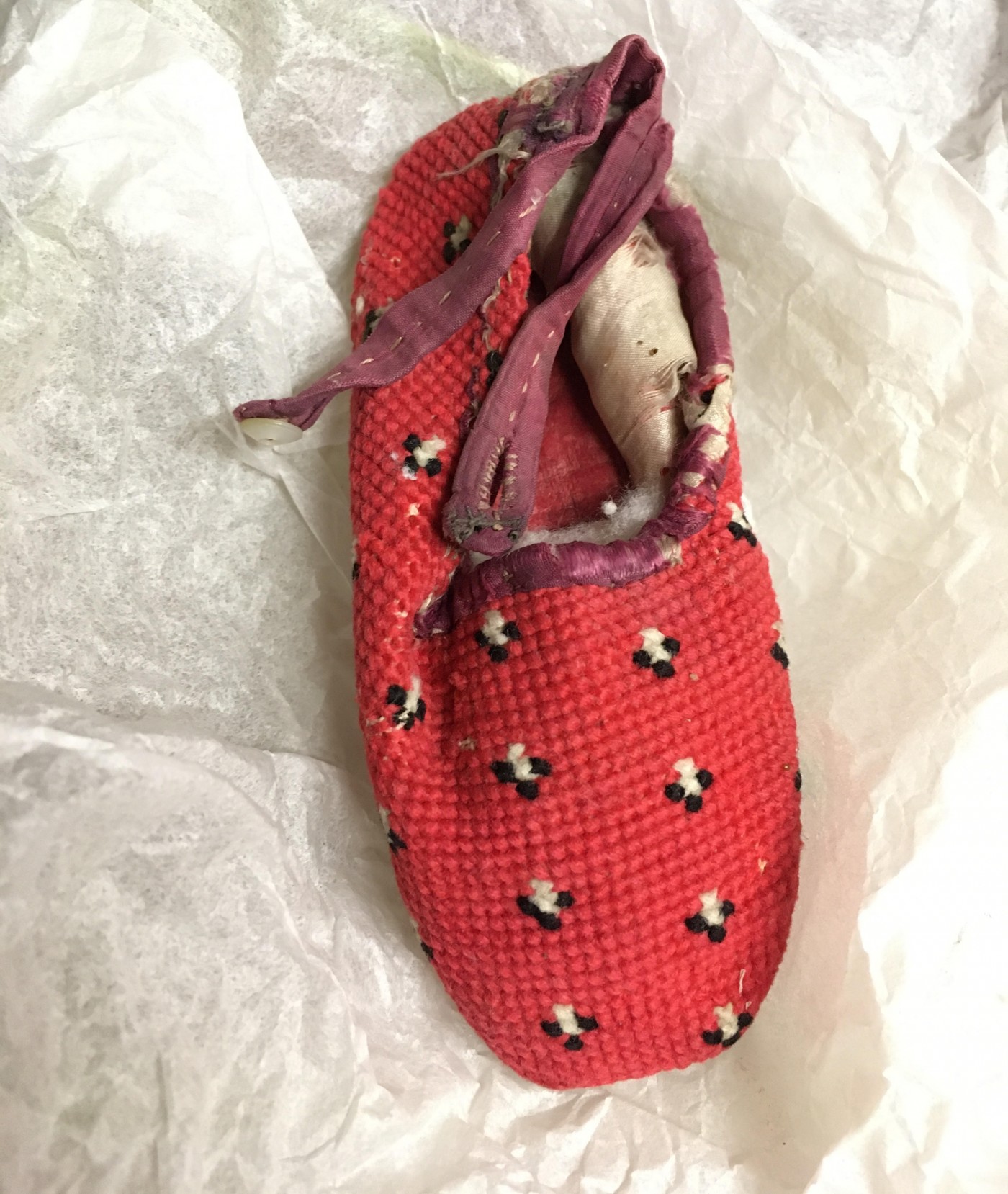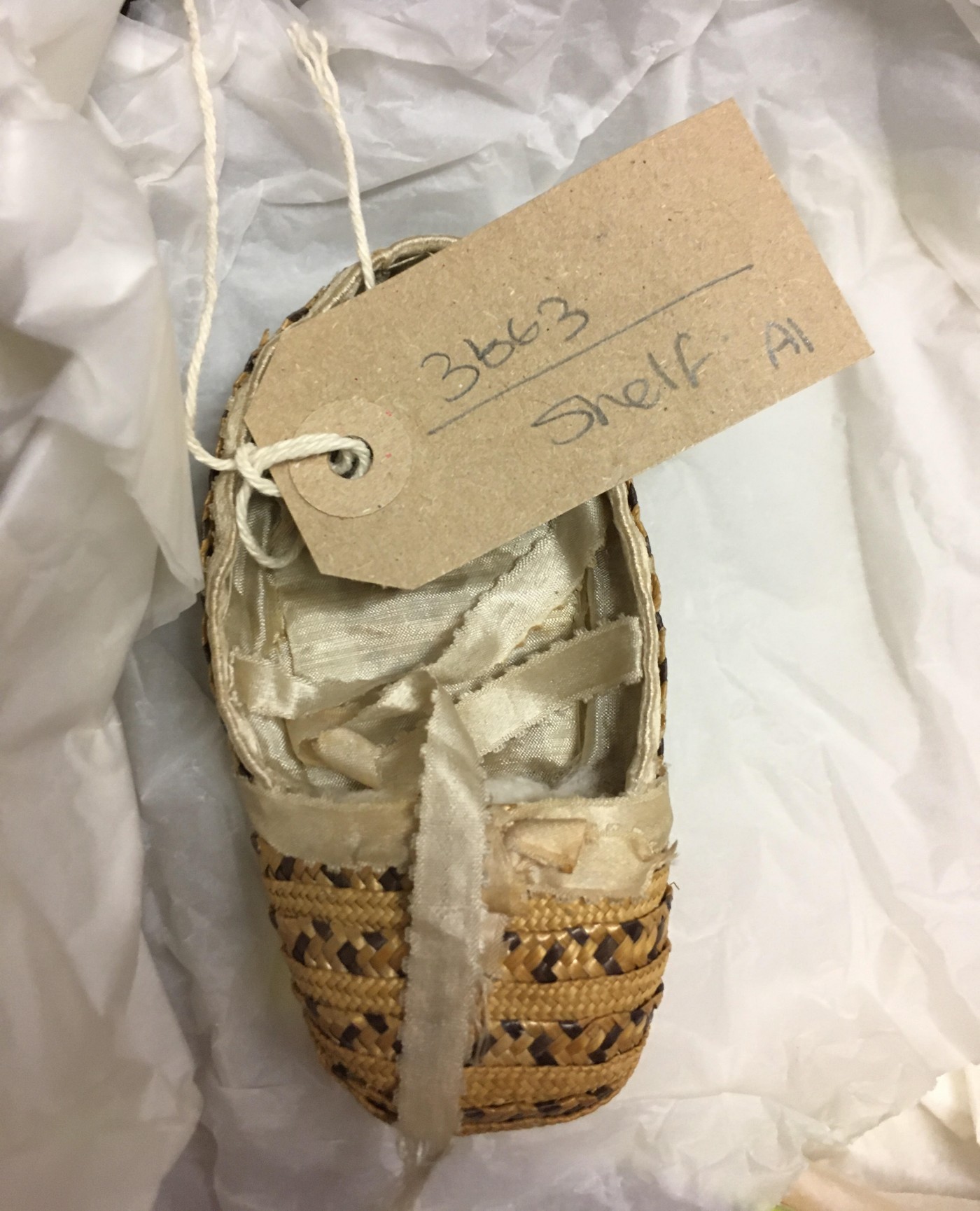- youtube
- bluesky
- Home
- About
- Costume Journal
- Membership
- Conference & Events
- Grants & Awards
- News & Social
MWEG 2020 recipient Greer Parker, shares her experiences working at North Hertfordshire Museum's shoe collection.
Whilst undertaking my MA degree in Fashion Curation at London College of Fashion, University of the Arts London, I was awarded a Costume Society-funded placement with North Hertfordshire Museum, Hitchin. Unfortunately, due to the Covid restrictions, it was a year before I was able to begin. When restrictions eased, from September 2021, I was able to commute from York (where I now work) and finally undertake my placement.
The North Hertfordshire Museum shoe collection is made up of men’s, women’s and children’s shoes from the 18th century to the present day. The aim of the placement project was to update and upload the historic shoe collection to the online collection system, meaning objects that were barely seen in person are now easily accessible to a much wider audience.
To do this, I spent six weeks condition checking objects, measuring, photographing and updating digital files. I completed the project by curating a temporary display cabinet inside North Hertfordshire Museum, to show my findings. Here visitors can see a selection of the more unusual and aesthetically pleasing items which form the collection.
These range from the diamante studded shoes of the 1920s, shoes made in miniature for infants, to 18th century dance slippers with ‘gauche’ (left) and ‘droite’ (right) written inside, to ensure they were worn on the correct feet. The oldest shoes in the display are small red shoes for an infant, from the 1790s. It is always intriguing to see something made so long ago, not to mention something made so precisely in a miniature size.
My background is in historic dress research and production, so I have been able to bring my knowledge of historic dress to the project, whilst also getting the opportunity to work hands on with a historic shoe collection. I have really enjoyed my time with the museum, gaining incredible experience of working with curators and a digital archiving system, along with the modern practice of blended working, both on site and from home.
In the future, I would love to continue working with historic dress and social history collections, as clothing is such an emotive link with the past. Knowing an object had a life before accession into a museum’s collection creates a very tangible link with the past and a visual representation of our cultural heritage.
I would like to say thank you to the North Hertfordshire Museum and the Costume Society - this experience has been incredible. After studying during the lockdown, being able to undertake a project in person has been enjoyable and incredibly rewarding, allowing me to gain valuable hands-on experience of working with a museum collection.
The Museum Work Experience Grant (MWEG) is intended to support students seeking museum work experience with a dress collection and to help UK museums accomplish projects essential to the care, knowledge and interpretation of collections. In each year a grant of up to £1000 will be offered to a student applying jointly with an appropriate UK-based museum. The volunteer should be a student (minimum second year undergraduate) or recent graduate of an appropriate UK university course.
You can read more about Greer's experienes on her North Hertfordshire Museum blog post.
Image gallery

Selection of shoes from the North Hertfordshire Museum collection, 1790–1930s, image by Greer Parker

Berlin wool work and silk, square-toed infants’ shoes, 1845-60, image by Greer Parker

Object label showing previous numbering system, with infants’ shoes made of plaited purple and natural straw, 1830-70, image by Greer Parker

Square-toed infants’ shoes of bronze glacé kid leather, 1840-60, image by Greer Parker